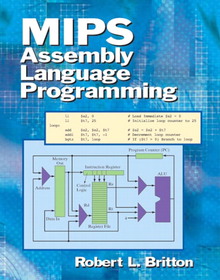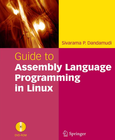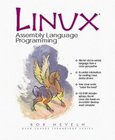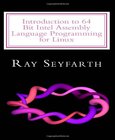MIPS Assembly Language Programming

Book Details:
| Publisher: | Prentice Hall |
| Series: | Prentice Hall |
| Author: | Robert Britton |
| Edition: | 1 |
| ISBN-10: | 0131420445 |
| ISBN-13: | 9780131420441 |
| Pages: | 168 |
| Published: | Jun 07 2003 |
| Posted: | Nov 19 2014 |
| Language: | English |
| Book format: | |
| Book size: | 0.51 MB |
Book Description:
Users of this book will gain an understanding of the fundamental concepts of contemporary computer architecture, starting with a Reduced Instruction Set Computer (RISC). An understanding of computer architecture needs to begin with the basics of modern computer organization. The MIPS architecture embodies the fundamental design principles of all contemporary RISC architectures. This book provides an understanding of how the functional components of modern computers are put together and how a computer works at the machine-language level. Well-written and clearly organized, this book covers the basics of MIPS architecture, including algorithm development, number systems, function calls, reentrant functions, memory-mapped I/O, exceptions and interrupts, and floating-point instructions. For employees in the field of systems, systems development, systems analysis, and systems maintenance.
Download Link:
Related Books:
Guide to Assembly Language Programming in Linux
Introduces Linux concepts to programmers who are familiar with other operating systems such as Windows XP Provides comprehensive coverage of the Pentium assembly language. Processor designs can be broadly divided into CISC (Complex Instruction Set Computers) and RISC (Reduced Instruction Set Computers). The dominant processor in the PC market, Pentium, belongs to the CISC category, and Linux is fast becoming the number one threat to Microsoft Windows in the server market. This unique guidebook provides comprehensive coverage of the key elements of Assembly language programming, specifically targeting professionals and students who would like to learn Assembly and intend or expect to move to the Linux operating system. The book instructs users on how ...
Linux Assembly Language Programming
Master x86 assembly language from the Linux point of view! Assembly language lies at the boundary between hardware and software. While it can be described purely in terms of how it controls hardware, many of its features only make sense in the context of operating systems and programming languages. In Linux Assembly Language Programming, Bob Neveln explains all the key features of x86 assembly language in the context of the Linux operating system and the C language. The book's step-by-step, one-concept-at-a-time coverage is designed to help experienced hardware programmers move to Linux, and learn how to create Linux device drivers. As developers learn new x86 assembly language skills, they also gain "under the hood" insight into how Linux ...
Introduction to 64 Bit Intel Assembly Language Programming for Linux
This book is an assembly language programming textbook introducing programmers to 64 bit Intel assembly language. The book is intended as a first assembly language book for programmers experienced in high level programming in a language like C or C++. The assembly programming is performed using the yasm assembler (much like the nasm assembler) under the Linux operating system. The book primarily teaches how to write assembly code compatible with C programs. The reader will learn to call C functions from assembly language and to call assembly functions from C in addition to writing complete programs in assembly language. The gcc compiler is used for C programming. The book starts early emphasizing using the gdb debugger to debug programs. Being able t...
2007 - 2021 © eBooks-IT.org



